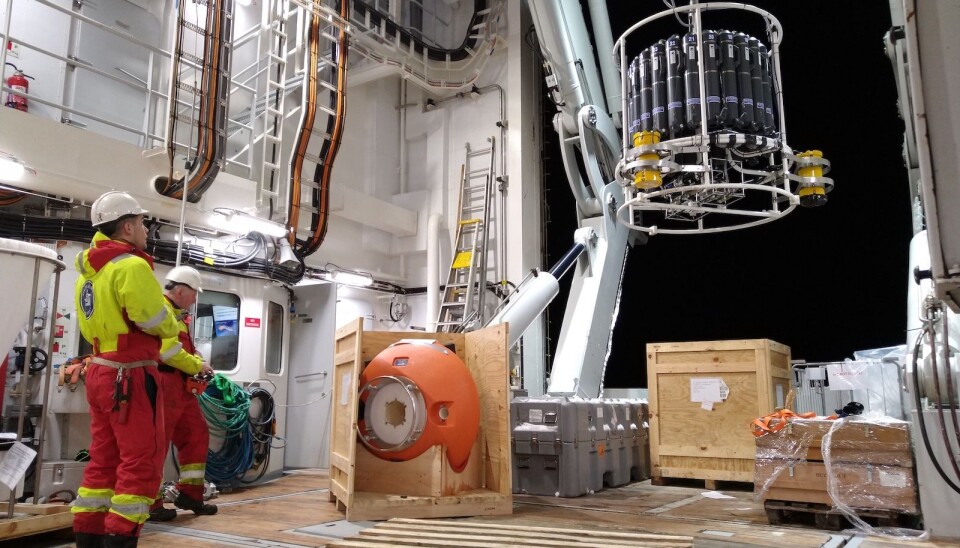
Night watch
There is something magical about working night shifts on a boat. And magically tiring.
Work on a research vessel is 24/7 - day and night - making the most of the precious ship time.
On this cruise, it is dark 24/7, making the difference between day and night purely one defined by the clock.
And yet, nights FEEL different. Quieter, more focused, calmer even if the work itself is all but calm. Sometimes, night shifts can lead to the strongest friendships. However, they can also be rather lonely.

The main focus of our cruise is the recovery and redeployment of a whole bunch of moorings east and north of Svalbard. As mooring operations require well rested mooring techs and deck crew, they are given priority during daytime.
Any additional measurements such as CTD (CTD = Conductivity, Temperature, Depth; a sensor package, which is lowered on a cable from the surface all the way down to the seafloor) transect where we measure depth profiles of temperature, salinity and currents along a line in the ocean, therefore mostly happen during the night.
Which means that those of us who take water samples from the CTD, have to work at night and however long it takes to process the samples.

Last night was one of those long nights with several deep CTDs – water depth was more than 2000 m, and to lower the CTD all the way down and bring it back up takes over two hours. When it got back on deck, Kristine, biology technician, and I, a confused physical oceanographer taking chemistry samples, sprang into action.
First came a round of tapping water from the big samplers mounted on the CTD rosette frame for various parameters like carbonate chemistry, nutrient concentration, or chlorophyll a concentration.
Then some of these subsamples needed simply storing away, others needed further processing. And so Kristine and I spent a few hours after each CTD in each our lab, while most of the rest of the science party was hopefully fast asleep.
The mood during nights like these moves between being incredibly enjoyable and satisfying to just very very long and tiring. I think everybody agrees that there are few better feelings than when you finally get to go to bed after a long shift.
But I wouldn’t want to miss those moments when you have the ship to yourself (well, almost), when you can enjoy a quiet moment on the observation deck, or when you laugh with your fellow scientists on the night watch because of some silly thing that can only happen because you have just worked through a night.







